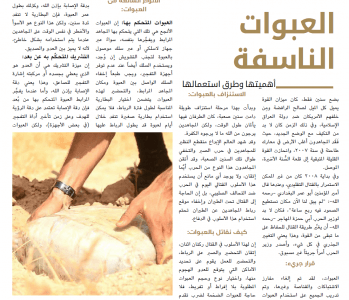
Islamic State officially gives up the ‘Caliphate’ and returns to insurgency
In the 101st edition of the Islamic State’s weekly newsletter al-Naba (page 8-9), released on 12 October 2017, the organization gave some fascinating details about how they responded to the “defeat” inflicted on them in 2007-08 by the American surge and the tribal Sahwa (Awakening) forces. The article describes how IS switched wholly to insurgent-terrorist tactics, dismantling its conventional fighting units and even its sniper teams in March 2008, and training in hit-and-run bombings.
The leadership at that time, the emir Hamid al-Zawi (Abu Umar al-Baghdadi) and his deputy, the “war minister” Abdul Munim al-Badawi (Abu Hamza al-Muhajir), encountered some initial scepticism, but the rank-and-file soon came on board when they saw its effectiveness. IS says that it is time to return to this form of warfare. In short, IS marked a switch in al-Naba 101 entirely from the statehood and governance phase of its revolutionary warfare, back into insurgency mode. The article is reproduced below.
This has long been telegraphed by IS. Nearly a year-and-a-half ago, with the famous last speech of Taha Falaha (Abu Muhammad al-Adnani) and in al-Naba itself just after, IS served notice that it knew the time of the caliphate as territory was limited, but that the organization was a cause and so long as the purity of its belief and methodology were maintained, it would continue to a victory that God has preordained.
This was a repeat of what al-Zawi had said in 2007 and 2008, at the nadir of the IS movement’s fortunes—statements that look vindicated in retrospect. And in an al-Naba article in September, IS noted its de facto abandonment of any form of conventional warfare. In the article in September—themes of which recurred in the 12 October article—IS said the emphasis had to be on avoiding the U.S.-led Coalition’s aircraft: the Coalition’s “partner force” was an ineffective militia, IS write, which acted primarily to draw IS’s fire so that the jihadists’ positions were exposed and could then be destroyed by airstrikes.
The immediate meaning of this is that the recent “victories” against IS—in Deir Ezzor city, Mayadeen, al-Qaim, Raqqa itself, and soon in al-Bukamal—should not be taken as evidence of the organization’s collapse, but of a strategic decision made by it. In 2010, the U.S. demolished IS’s infrastructure in Baghdad and captured the city’s emir, opening a trail that led to the killing of al-Zawi and al-Badawi.
In three months in early 2010, the U.S. eliminated eighty-percent of IS’s leadership, a decapitation strike it had seemed IS would never recover from. But IS did recover, because it was working with different metrics that saw the war as a long-term project, while the Americans did not recognize that the surge was a process that had to be maintained and tried to pocket it as a done deal, which meant they could leave. This short-termism has been on ample display this time around. This is especially worrying since IS is nowhere near as weak now as it was last time and operates in a social-political environment that is so much more favourable than in 2008.
Source: Syrian Intifada





